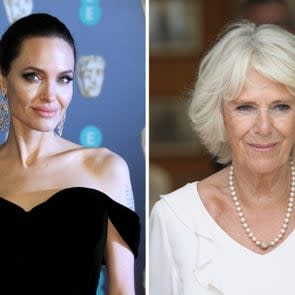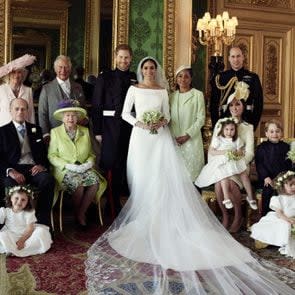The British Royal Family Tree and Complete Line of Succession
Queen Elizabeth II is the longest-reigning monarch of the United Kingdom—2022 marks 70 years since her ascension to the throne. Next in line on the royal family tree is Prince Charles, her son with her late husband, Prince Philip, followed by Queen Elizabeth’s grandchildren. Below, follow the line of succession and learn more about Queen Elizabeth’s family.
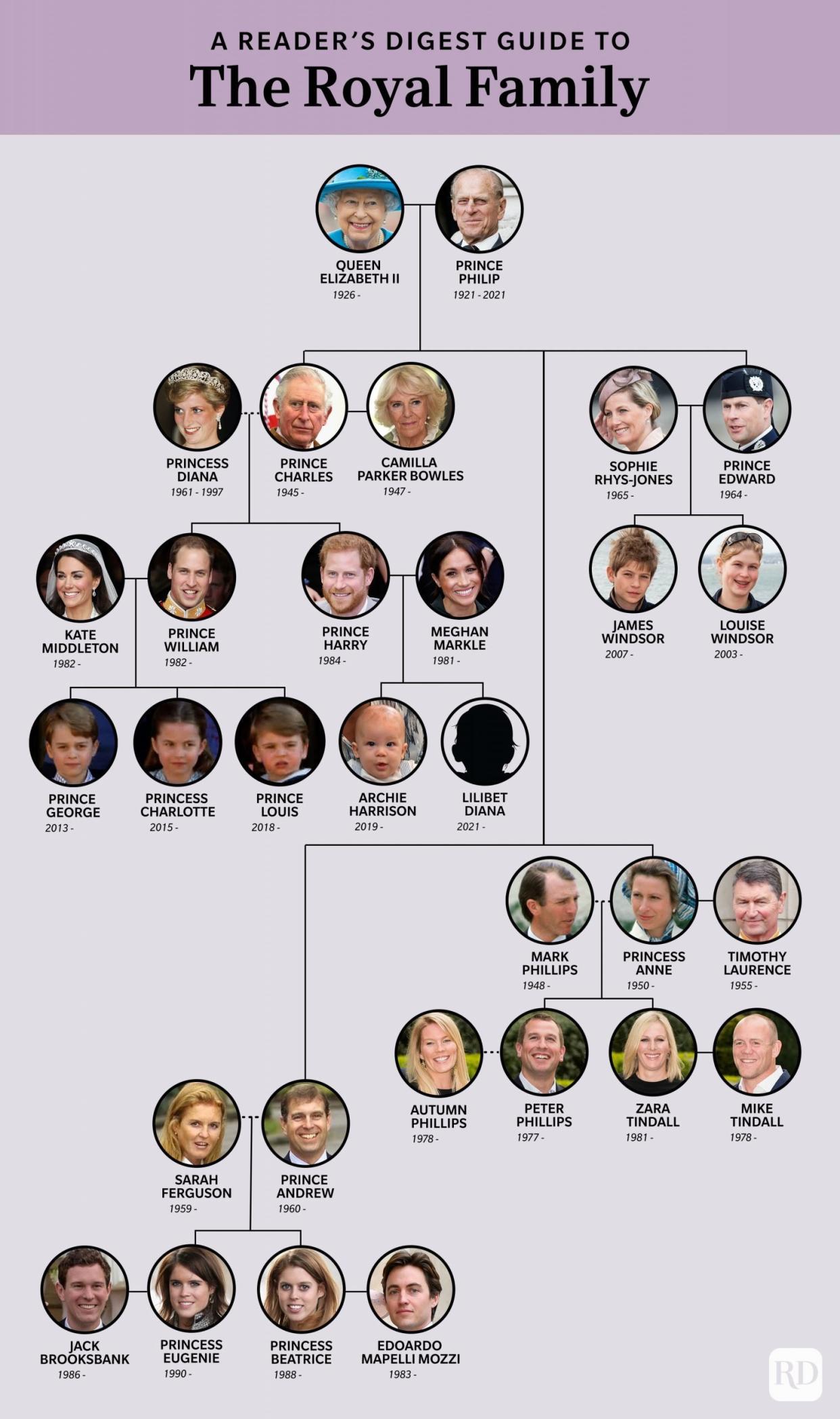
Queen Elizabeth II
Elizabeth was the first-born child of her father, King George VI, who was the second-born son of King George V. As the second-born son, it was not expected that her father, known in his early life as Prince Albert, would become king. However, less than one year into his reign, King Edward VIII, Elizabeth’s uncle, decided that he no longer wished to rule. In what would go down as one of the biggest royal family scandals in history, King Edward abdicated the throne in December 1936 and her father suddenly found himself being crowned as King George VI.
Then, Princess Elizabeth of York, as she was known at the time, became the “heir presumptive.” Unlike the “heir apparent,” whose position as second in line is absolute, the heir presumptive’s position is subject to displacement in the event a male heir is subsequently born, which, as one can see from looking at the royal family tree, never happened in Elizabeth’s case. When her father died in 1952, Elizabeth was crowned Queen.
1. The heir apparent: Prince Charles
On November 14, 1948, Queen Elizabeth and Prince Philip welcomed their first child, Prince Charles Philip Arthur George. Prince Charles is next in line to the throne. In August 1969, the year Charles turned 21, he was invested as the Prince of Wales in a lavish ceremony. In 1981, the Prince married Lady Diana Spencer, making her the Princess of Wales. In 1982, the couple welcomed their first son, Prince William Arthur Philip Louis, and their second, Prince Henry Charles Albert David (Prince Harry), in 1984. When Queen Elizabeth dies, Prince Charles will become King.
Prince Charles married Camilla Parker Bowles in 2005. At that time, the royal family announced that Camilla would take the title of Princess Consort once Prince Charles ascends to the throne. But on her accession anniversary in 2022, Queen Elizabeth publicly stated that she wants Camilla to have the official title of Queen Consort when Prince Charles becomes King.
2. Prince William, Duke of Cambridge
Next on the royal family tree is Prince William, Duke of Cambridge, the first-born son of Prince Charles and his late wife, Diana, Princess of Wales. By virtue of his being male, from the moment of his birth in 1982, Prince William became next in line to the throne after his father, Prince Charles.
In 2011, Prince William married Catherine Middleton. The two became the Duke and Duchess of Cambridge. Two years later, in 2013, the Cambridges welcomed their first child, Prince George of Cambridge, followed by Princess Charlotte in 2015 and Prince Louis in 2018.
3. Prince George of Cambridge
Prince George stands third in line to the throne after his grandfather and father. When Prince Charles becomes king, George will take the place of his father, Prince William, as second in the order of succession. When William becomes king, George will become the heir apparent.
4. Princess Charlotte of Cambridge
On May 2, 2015, the Cambridges welcomed daughter Princess Charlotte into the world. Because the Queen ratified the Succession to the Crown Act (more on that below) just two months before Charlotte’s birth, nothing stands to bump Charlotte from her current place at fourth in the line of succession except the birth of heirs to her brother, Prince George. Since Prince George is at present only eight years old, that could be a while.
5. Prince Louis of Cambridge
Prince Louis, born April 23, 2018, is fifth in line to the throne. His position stands to drop when either of his elder siblings, George or Charlotte, have children of their own.
6. Prince Harry, Duke of Sussex
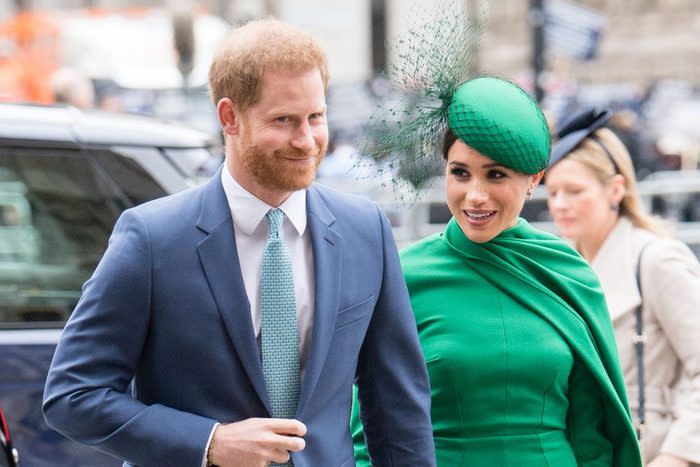
At the time of his birth in 1984, Prince Harry was third in line to the throne. Harry has seen his place in the line of succession drop further with the birth of each of Prince William’s children. Today, Prince Harry stands at sixth in line to the throne, despite the fact that he is not currently a working member of the royal family.
Harry, who married Meghan Markle in 2018, with the two becoming the Duke and Duchess of Sussex, has admitted to feeling marginalized as the “spare.” This may have contributed to Harry’s stepping down from his duties as a senior member of the royal family, along with other factors, including the discomfort that the Duchess of Sussex has expressed with regard to the royal family, its rules, and its mores.
7. Master Archie Harrison Mountbatten-Windsor
Born in 2019, the first Sussex child, Master Archie Harrison Mountbatten-Windsor, was given no royal title by the Queen when he was born. The Queen was adhering to applicable rules regarding royal stylings and titles, which hold that the child of any son of the monarch is entitled to be styled as an “HRH” and with the title of Prince or Princess. Though Harry himself is the child of the son of the monarch, his children do not fall into that category.
Despite being a “commoner,” young Archie is currently seventh in line to the throne.
8. Miss Lilibet Diana Mountbatten-Windsor
Born on June 4, 2021, Lilibet Diana Mountbatten Windsor, the Duke and Duchess of Sussex’s second child, is named for her great grandmother, Queen Elizabeth II, whose childhood nickname had been Lilibet, and for her grandmother, the late Diana, Princess of Wales. Although “Lili” has no royal title, she stands eighth in line to the throne.
9. Prince Andrew, Duke of York
Prince Andrew, the third child of Queen Elizabeth II, was born a full decade after his older sister, Princess Anne. However, Andrew’s place in the order of succession is ahead of Anne’s because the system of male primogeniture was still in effect at the time of Anne and Andrew’s respective births. Until Prince Charles began having children of his own, Andrew was next in line behind Prince Charles.
Despite Prince Andrew’s apparent “firing” in the wake of recent scandals, he nevertheless still factors into the line of succession, standing currently at ninth. Prince Andrew and his ex-wife Sarah, Duchess of York, have two children, Princess Beatrice and Princess Eugenie.
10. Princess Beatrice of York
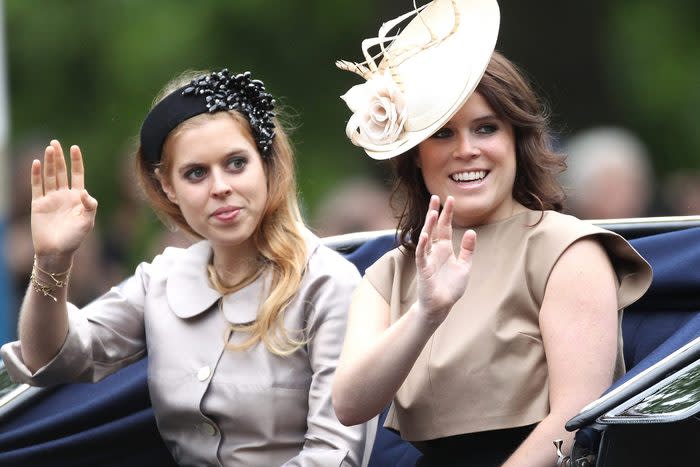
Born four years after Prince Harry, Princess Beatrice of York, the elder daughter of Prince Andrew, had once been the highest-ranking female royal family member in the order of succession. At the time of her birth, Princess Beatrice was fifth in line for the throne (after the Princes Charles, William, Harry, and Andrew). That, of course, changed when Princess Charlotte was born in 2015. Today, Princess Beatrice stands at 10th in the order of succession.
11. Sienna Elizabeth Mapelli Mozzi
Princess Beatrice married property developer Edoardo Mapelli Mozzi in February 2020. On September 18, 2021, the newlyweds welcomed their first child, Sienna Elizabeth Mapelli Mozzi. Sienna has no royal title, but she stands at 11th in the line of succession.
12. Princess Eugenie of York
In 1990, Prince Andrew and his wife, Sarah Ferguson, welcome a second daughter, Princess Eugenie of York. Eugenie married Jack Brooksbank in 2018. She currently stands at 12th in the British royal line of succession.
13. Master August Brooksbank
On February 9, 2021, Princess Eugenie and Jack Brooksbank welcomed their first child, a son named August Brooksbank. Though he has no royal title, August is 13th in line for the throne.
14. Prince Edward, Earl of Wessex
Born in 1964, Prince Edward, Earl of Wessex, is Queen Elizabeth II’s youngest child. He was born before male primogeniture was abolished, and his place in the royal order of succession is after both of his older male siblings and their progeny. For the same reason, Edward, like his older brother, Prince Andrew, appears in the royal order of succession before his older sister, Princess Anne. He married Sophie Rhys-Jones in 1999, and the pair have two children.
15. James Mountbatten-Windsor, Viscount Severn
Next in line to the throne after Prince Edward are Prince Edward’s children. His son, James, was born in 2007, and although James is younger than his sister, Lady Louise Mountbatten-Windsor, he is higher in the order of succession because he was born prior to the elimination of male primogeniture. James’ title, Viscount Severn, makes him a peer of the Queen, rather than a commoner like the children of Prince Harry and Princesses Beatrice and Eugenie. It is also within James’ prerogative to take on the title of prince and the HRH styling when he reaches age 18 in 2025. James is 15th in line to the throne.
16. Lady Louise Mountbatten-Windsor
When James’ sister, Louise, was born in 2003, her parents, Prince Edward and Countess Sophie, announced that Louise would not be styled as a princess, although she would be entitled to be, by virtue of being the child of a son of the Queen. Instead, Louise became the first granddaughter of the Queen to carry the surname Mountbatten-Windsor from birth.
Like James, Louise has the option of adopting the style HRH Princess Louise if she chooses to do so upon turning 18. Though she was eligible in 2021, her title remains the same.
17. Princess Anne, Princess Royal
Finally, we come to the last of Queen Elizabeth’s children, Elizabeth’s only daughter, Her Royal Highness Princess Anne, Princess Royal. When Anne was born in 1950, her place in the royal family tree had her just behind her older brother, Prince Charles, in the royal order of succession. However, Anne’s place was immediately usurped by her brothers, Andrew and Edward, upon their respective births. Anne has been further displaced with each birth of a child or grandchild of Charles, Andrew, or Edward. She is currently 17th in line for the throne.
18. Peter Phillips

Since Princess Anne is the daughter, and not the son, of the monarch, her children are not born to be styled as HRH princes or princesses (the way children of the Queen’s sons are). The Princess Royal’s first-born child is Peter Phillips. When Peter was born in 1977, the Queen offered to bestow these royal stylings anyway, but Anne and her then-husband, Captain Mark Phillips, declined.
Peter Phillips, who has embraced his life as a commoner, tends to stay out of the limelight. The managing director of Sports and Entertainment Limited UK reportedly did not even tell his future wife, Autumn Kelly, of his place in the royal family tree for the first six weeks that the two were becoming acquainted.
19. Savannah Phillips
The first child of Peter and Autumn Phillips is Savannah Phillips, born in 2010. The first great-grandchild of the Queen, Savannah is currently number 19 in the royal order of succession, immediately after her father, Peter Phillips.
20. Isla Phillips
Born in 2012, Isla Phillips is the second child of Peter and Autumn Phillips. Isla is 20th in line to the throne.
21. Zara Tindall (née Phillips)
Princess Anne’s second child is her daughter, Zara, born in 1981. Zara, like her great-grandmother, the Queen, is an avid equestrian. She even competed in the 2012 Olympics and took home the silver medal. Zara married rugby player Mike Tindall in 2011. They have three children, Mia (born in 2014), Lena (born in 2018), and Lucas Tindall (born in 2021).
22. Mia Tindall
As grandchildren of the Princess Royal, Zara and Mike’s children are in the line of succession. Born in 2014, Mia Tindall is 22nd in line to the throne.
23. Lena Tindall
The Tindalls’ second child, daughter Lena, was born in 2018. Like her sister, Mia, she did not lose her place in the order of succession when her brother, Lucas, was born in 2021.
24. Lucas Tindall
Born in March 2021, Lucas Tindall, the third child of Zara and Mike Tindall, currently stands at 24th in line to the throne.
How the line of succession is determined
According to the official website of the royal family, “the order of succession is the sequence of members of the Royal Family in the order in which they stand in line to the throne.” That order is determined first and foremost by position in the royal family tree. From the late 17th century until 2015, “next in line” after the monarch was the monarch’s eldest son, then that son’s eldest son, and so on.
Daughters were also in the line of succession but stood to lose their place on the birth of a subsequently born son. For example, Queen Elizabeth’s second child was a daughter, Anne, but Anne lost her place as next in line upon the birth of her two younger brothers.
The Succession to the Crown Act
In March 2015, the Succession to the Crown Act went into effect, ending the system of male primogeniture. Less than two months later, Princess Charlotte of Cambridge was born to the Duke and Duchess of Cambridge (Prince William and Catherine Middleton) and became fourth in line to the throne. Three years later in 2018, when Prince Louis of Cambridge was born, Charlotte retained her place in the line of succession, marking the first time that a female member of the royal family tree would retain her place in the line of succession even after the birth of a male sibling.
Source:
Royal.uk: “Succession”
Unlikely Royal Friendships
Official Royal Family Portraits
Queen Elizabeth II's Government Role
The post The British Royal Family Tree and Complete Line of Succession appeared first on Reader's Digest.
